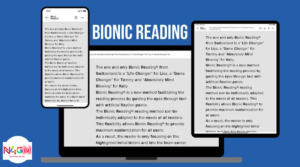Are you aware that approximately 40% of learners tend to discontinue their participation in online courses? Maintaining student engagement and motivation in the digital world can be challenging. Do not worry; this blog will dive into how Learning Management Systems (LMS) with interactive content can engage students effectively.
Interactive learning refers to the active involvement of learners in their educational process. This form of learning occurs through simulations, games, and multimedia presentations. Consider the impressive graphics and animations in Adobe Captivate Prime.
Using various LMS tools, such as slides and check-ins, learners can engage in online learning with enjoyment and improved retention. These tools include text or video-based biometric attendance recordings and interactive features.
Before delving into the technical aspects, let’s discuss some tips for creating interactive content to engage your audience and encourage active participation.
1. Train Your Instructors
Training instructors are mandatory and essential. It is important for educators to consistently create dynamic content that goes beyond simply imparting knowledge to the students they oversee. The training sessions should be designed with the student’s interests in mind.
Incorporating technology for classroom collaboration does not automatically lead to improved engagement or teaching efficiency. Educators must possess a solid understanding and mastery of these technologies to achieve the desired outcomes.
Ensure that your faculty members receive training on the latest technological advancements. This will empower them with the necessary skills to effectively utilize these advancements and deliver high-quality instruction.
2. Encourage Story-Telling
Do you recall being captivated by the stories your parents or grandparents shared at home? Narrative flow has been employed throughout history due to its universal appeal across all age groups. The storytelling technique can be employed in educational institutions to create models.
In these models, teachers narrate scenarios that have taken place. This approach helps students memorize events more easily and better understand specific problems. It also ensures that students remain focused. This method is engaging and resembles an immersive game.
When employing a storytelling strategy to educate students, it is important to remember the use of metaphors—metaphorical comparisons aid in clarifying and facilitating understanding.
3. Don’t Be Afraid To Use Different Formats
If you are curious about new experiences, now is the perfect time to explore various forms of interactive media. Utilizing online videos as an instructional tool allows learners to interact with course content. Videos are engaging and enable instructors to teach at their preferred pace.
Infographics offer a visually simple way to present detailed classroom information using images and graphics rather than relying solely on textbooks.
If things get a little dull, implement gamification learning techniques. These methods involve using exciting scenarios like treasure hunts or puzzles. These scenarios require interpreting solutions from abstract thought experiments, essentially problem-solving tasks.
Technology has allowed for flexibility in meeting diverse cognitive needs. By incorporating a variety of approaches, you can observe a sense of wonderment in people’s eyes.
4. Let Students Own It
To maintain student engagement, creating opportunities for students to take ownership of the study content is important. This will increase their sense of control and empowerment, leading to greater satisfaction with their educational experience.
By allowing personalization based on individual interests, students can express their creativity. They can learn at their own pace without feeling overwhelmed or confused. This also helps them better imagine themselves applying concepts to real-life projects or discussions. As a result, students become more engaged and connected to the teaching materials.
One effective method is to activate peer revision editing features through LMS platforms. Students can network, collaborate, present their work, and conduct evaluations. This allows for increased interaction beyond predetermined limitations, resulting in a feedback loop confirming satisfaction.
5. Ensure Accessibility And Great UX
Ease of accessibility is crucial to the virtual schooling experience. Fragmented information presentation can lead to disastrous outcomes. Hence, learners must have a seamless experience when studying materials and navigating during class time.
Creating interactive content that does not distract students from their studies is crucial. Utilizing user-friendly UI platforms that are easy to operate, even for those without extensive technical expertise, is advantageous for online learners. This also ensures accessibility for individuals from diverse cultures and genders.
Conclusion
An LMS, or learning management system platform, can appear intimidating initially.
However, once you embrace its interactive features and personalize content while utilizing peer review feedback from students, you will find that it enhances your academic journey. This, coupled with a great user experience, ensures learners are motivated and eager to acquire more knowledge.
As a result, they will be confident in their projects and recommend others enroll under your guidance. Dedicated education professionals who experiment with educational technologies are responsible for creating these impressive interfaces.
Their collaborative efforts create a productive environment that fosters successful learning platforms. On such platforms, knowledge flows effortlessly, much like sipping sweet tea on a back porch while watching the sunset’s hues filter through the horizon.






